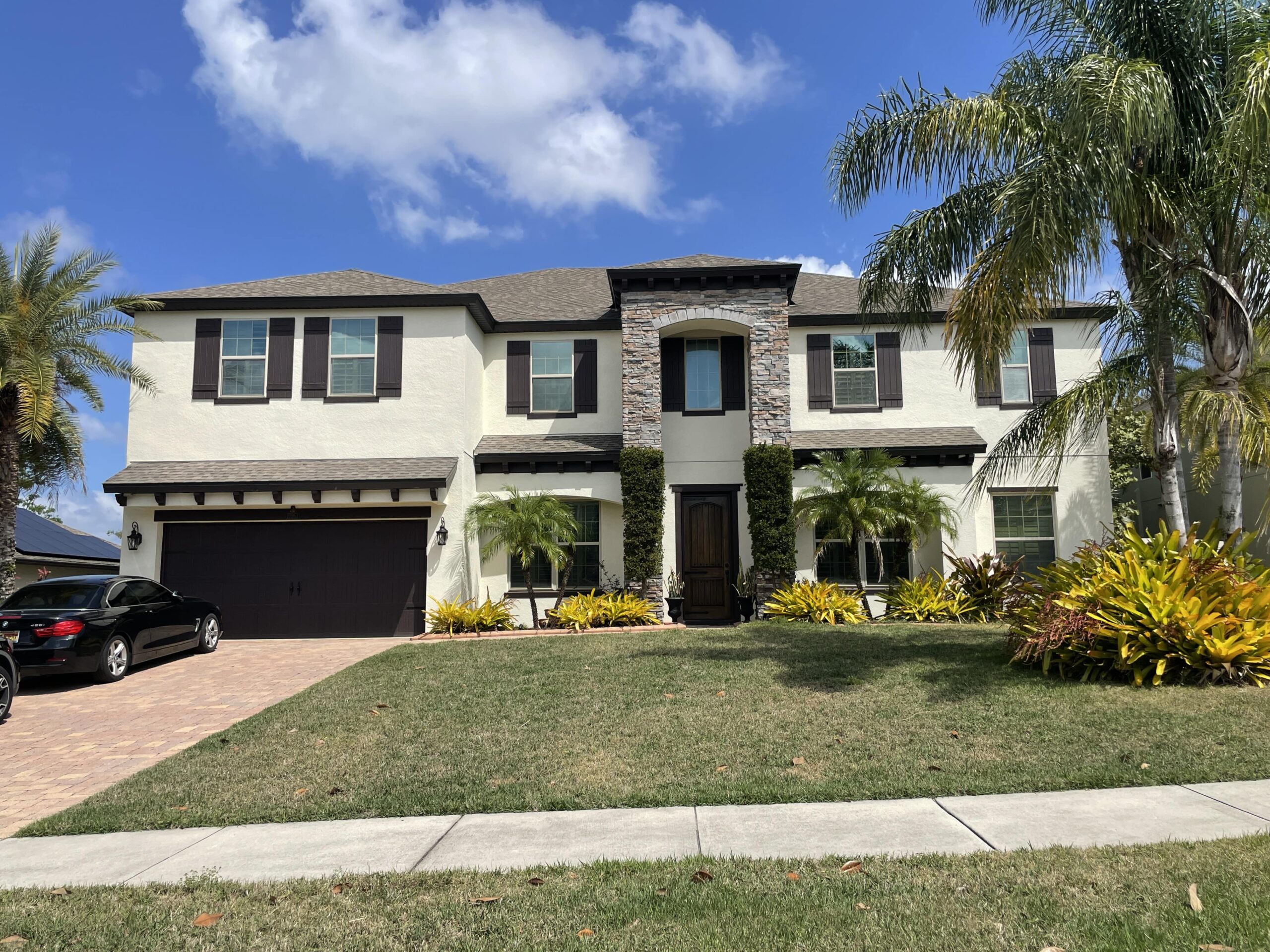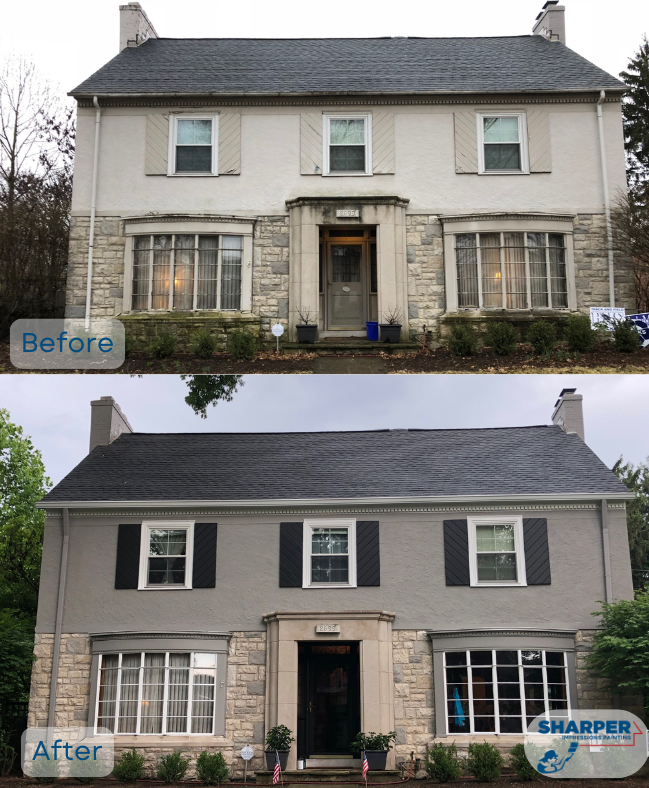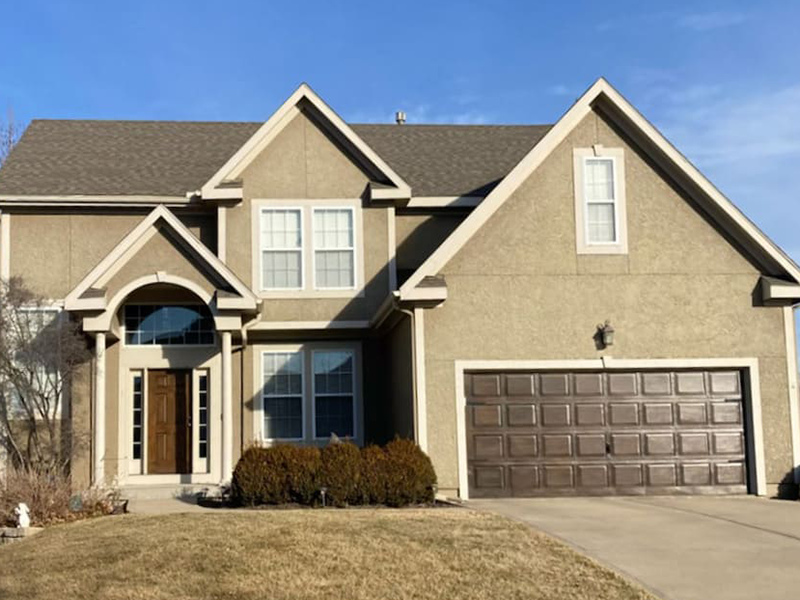When it comes to protecting and enhancing the exterior of your home, few things make as significant an impact as the paint you choose. In Columbus, OH, the weather presents unique challenges for homeowners—cold, wet winters, humid summers, and frequent freeze-thaw cycles—all of which can affect the durability and appearance of your home’s exterior paint. But with the right information, selecting the best paint can save you time, money, and frustration, ensuring that your home looks beautiful for years to come.
This guide will walk you through the essentials of choosing the right exterior paint for your Columbus home.
Whether you’re repainting after a few years or starting fresh, you’ll learn about the unique weather conditions in Columbus, the must-have qualities of exterior paints, and the types of paints that are most suited for this region. You’ll also discover common mistakes to avoid and when it’s time to consult with a professional.
What Makes Columbus, OH Weather Tough on Exterior Paint?

Columbus experiences a variety of weather conditions that can take a toll on exterior paint. From the blistering cold of winter to the sweltering heat of summer, the fluctuations in temperature can cause significant stress on your paint job. Here’s how Columbus’s weather can affect your home’s exterior finish:
Extreme Temperature Swings
Columbus sees winter lows that often dip below freezing, with summer highs reaching into the 80s and 90s. The constant expansion and contraction of exterior surfaces, as they shift with the temperatures, can lead to cracks, blisters, and peeling paint. This means your paint needs to be flexible enough to handle these changes.
Heavy Rainfall and Snow
Columbus is no stranger to heavy rainfall and snow, both of which can infiltrate your home’s exterior surfaces. Snowmelt and rainwater can seep under paint, causing blistering and peeling. Freeze-thaw cycles (where water trapped in the paint freezes and expands in winter, then melts in the spring) can also damage the surface and the paint itself, making it essential to choose a durable paint that can withstand these extremes.
High Humidity in Summer
Summers in Columbus can be incredibly humid, especially in the mid-to-late summer months. High moisture levels in the air increase the likelihood of mold and mildew growth, which can take a toll on your exterior paint. Moisture can also cause paint to bubble or peel, especially on surfaces that aren’t properly prepared or protected.
Strong Winds and Storms
The combination of strong winds and moisture-driven rain can lead to damage from debris and water on the siding. Paint can wear away faster in these areas, leading to premature fading and damage.
Must-Have Qualities for Exterior Paint in Columbus

The paint you choose for your home’s exterior should be able to stand up to these unpredictable weather conditions. Here are the qualities to look for when selecting exterior paint for your Columbus home:
Flexibility
One of the most important features to look for is flexibility. A flexible paint will expand and contract with temperature changes, preventing cracking and peeling as the seasons change. This is particularly important in a city like Columbus, where extreme temperature fluctuations are common.
Strong Adhesion
Paint that adheres well to surfaces is crucial, especially when moisture is a factor. Strong adhesion prevents water from getting underneath the paint, reducing the likelihood of peeling or blistering.
Choose paints that are designed for high-humidity environments and offer excellent adhesion to both new and weathered surfaces.
Mildew-Resistant Formulation
Mildew and mold thrive in humid conditions, making mildew resistance an essential quality for paints in Columbus. A mildew-resistant formula will help prevent fungal growth on your home’s exterior, keeping it clean and looking fresh for longer.
UV Protection
Columbus can experience long sunny days in the summer, which can cause fading and discoloration of your home’s exterior paint. UV protection is key to maintaining vibrant colors and preventing your paint from fading over time. Look for paints with built-in UV protection to ensure that your home’s exterior stays beautiful for longer.
Breathability
Breathable paint allows moisture to escape from the surface, preventing the buildup of trapped water that could cause the paint to peel or blister. This is especially important for homes with wood siding or other porous materials that can absorb moisture.
Best Types of Exterior Paints for Columbus Homes
Choosing the right type of exterior paint is crucial to ensuring the longevity and protection of your home. Here are some of the best paint options for homes in Columbus:
| Paint Type | Best For | Pros | Cons |
|---|---|---|---|
| Acrylic Latex | Wood, vinyl, fiber cement, concrete, metal | – Weather-resistant: Performs well in extreme weather conditions, including hot summers and cold winters. – Flexible: Expands and contracts with temperature changes without cracking. – Mildew-resistant: Ideal for humid environments like Columbus, OH. – Quick drying: Allows for faster application and less waiting time. |
– Frequent touch-ups on weathered surfaces: On older, more porous surfaces, it may require additional coats or touch-ups sooner. – May not bond well with unprepared surfaces: Surface preparation is critical for maximum adhesion and longevity. |
| Elastomeric | Brick, stucco, masonry, concrete, heavily cracked exteriors | – Crack-bridging: Highly flexible, ideal for surfaces with minor to moderate cracks caused by temperature fluctuations or settling. – Waterproofing: Creates a thick, waterproof layer that prevents water infiltration. – Durable: Highly resistant to moisture, which is especially beneficial in areas with freeze-thaw cycles. |
– Less breathable: If not applied correctly, the paint may trap moisture, leading to potential issues like mold or blistering. – Thicker application required: Typically needs to be applied in multiple coats for full protection, which can be labor-intensive and time-consuming. |
| Oil-Based Primer + Latex Topcoat | Historic homes, weathered wood siding, high-traffic areas | – Strong bonding: The oil-based primer promotes excellent adhesion, particularly on aged or porous surfaces. – Rich, glossy finish: Provides a smooth, polished surface that enhances the color of the topcoat. – Prevents tannin bleed: Ideal for certain woods like cedar, where tannin stains can bleed through paint. |
– Longer drying time: Requires extended drying periods between coats, making the project take longer to complete. – More labor-intensive: The application process is more complex as it requires multiple layers and waiting time for proper curing. – Fumes and VOCs: Oil-based paints release more volatile organic compounds (VOCs) and have stronger odors, so proper ventilation is needed. |
Mistakes Homeowners Make When Choosing Paint for Columbus Weather
When choosing exterior paint, homeowners often make some common mistakes that can lead to premature paint failure. Here’s how you can avoid them:
Using Low-Quality Paint
It might seem like a good idea to save money with cheap paint, but low-quality paint often leads to early peeling, fading, and cracking. High-quality exterior paints may cost more upfront but will save you money in the long run by lasting much longer and requiring fewer touch-ups.
Ignoring Proper Surface Preparation
Paint won’t stick well to dirty, wet, or peeling surfaces. Skipping surface prep or cutting corners can result in poor adhesion and premature failure. Make sure to thoroughly clean, scrape, and prime your surfaces before applying a fresh coat.
Choosing Paints Without Mildew Resistance
If you live in an area with high humidity, such as Columbus, you should never choose a paint that doesn’t include mildew resistance. Without this feature, your paint will be more prone to mold and mildew growth, which can damage the exterior and ruin your paint job.
Skipping Primer on Bare Surfaces
Primer is a crucial step in exterior painting. It improves adhesion and provides a smooth, even surface for the paint to adhere to. Skipping primer on bare wood, for example, can result in uneven coverage and peeling.
Recommended Sheens for Columbus Weather
The sheen of your exterior paint is just as important as the type and quality. Here’s what you need to know about sheens:
- Flat or Matte: Flat or matte finishes are ideal for hiding surface imperfections. However, they can be harder to clean and may not hold up as well to rain and snow splatter.
- Satin or Eggshell: Satin and eggshell finishes provide a balance of durability and appearance, making them a great choice for most exterior surfaces. These finishes are also easier to clean than flat finishes and can handle light rain and moisture.
- Semi-Gloss or Gloss: For high-traffic areas like trim, doors, and shutters, a semi-gloss or gloss finish is ideal. These finishes are easier to clean and provide a shiny, protective surface that can withstand rain and snow splatter.
How to Test Paint Colors and Products Before Committing

Before you commit to a full paint job, make sure you test the colors and products first. Here’s how:
Paint Large Test Squares
Test paint on large squares of the surface, especially on different sides of the house, to see how light and shadow affect the color. It’s important to see the color in different conditions before making a final decision.
Observe Over Time
Watch how the paint looks over a few days, especially in different weather conditions. This will give you a true sense of how the paint will perform in Columbus’s variable climate.
Check for Compatibility
If you’re painting over old oil-based paint, make sure your new paint is compatible. Some types of paint may not adhere well to old coatings without proper preparation.
Conclusion
Choosing the right exterior paint is essential for protecting your home against Columbus’s harsh weather conditions. By selecting paint with the right qualities—flexibility, adhesion, mildew resistance, UV protection, and breathability—you can avoid common pitfalls and ensure a long-lasting, beautiful finish. Whether you decide to DIY or hire a professional, make sure you select the right paint for your home’s specific needs.
If you’re unsure about which paint to choose, don’t hesitate to consult a local painting expert. Protect your home and your investment with the right exterior paint.
FAQ
Q: When is the best time to paint in Columbus?
A: Late spring to early fall, when temperatures are above 50°F and the humidity is manageable.
Q: What’s the average lifespan of exterior paint in Columbus?
A: 5–8 years, depending on surface material, exposure to the elements, and paint quality.
Q: Can I paint in high humidity?
A: No, humidity can trap moisture under the paint, leading to peeling and blistering.




